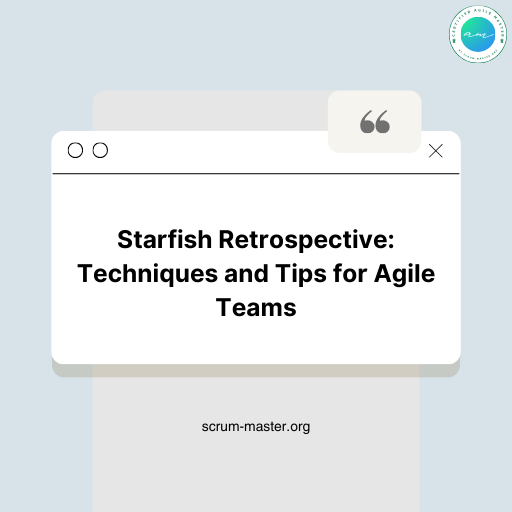The release of SAFe 6.0 version in March 2023 is a major step forward in scaling agile practices. This updated version addresses the growing challenges businesses face in an ever-changing digital world. It’s all about being adaptable and responsive – key factors in today’s business strategies. SAFe® 6.0 brings in new and significant improvements to meet these needs.
For Scrum Masters, Product Owners, Agile Managers, and agility practitioners, SAFe 6.0 offers new opportunities. It improves strategic alignment, makes workflows more efficient, and includes the latest technologies. These changes present new ways to manage agility effectively at a large scale. The goal is to better adapt to market shifts and to deliver value faster and more consistently.
Index
- 1 Redefining Enterprise Agility: The Essence of SAFe® 6.0
- 2 Evolving Roles and Responsibilities in SAFe 6.0
- 3 Accelerating Agile Delivery: The Eight Flow Accelerators of SAFe 6.0
- 4 Integrating Cutting-Edge Technologies in SAFe® 6.0
- 5 OKRs and Their Impact in SAFe 6.0
- 6 Terminology and Structural Changes in SAFe 6.0
- 7 Conclusion: My Thoughts on the SAFe 6.0 Update
- 8 Further information
Redefining Enterprise Agility: The Essence of SAFe® 6.0
Business Agility Value Stream (BAVS)
The introduction of the Business Agility Value Stream (BAVS) in SAFe 6.0 marks a significant advancement in integrating Lean-Agile into the core of business strategies. It represents the complete chain of value creation, from ideation to realization, emphasizing the importance of optimizing workflow for effective value delivery. This innovation is a step forward in SAFe’s recognition of the need to eliminate dependencies and promote a continuous flow of value.
As an agile coach, however, I observe that while BAVS is a positive theoretical evolution, its practical implementation in organizations may require deeper structural changes. Transforming towards true enterprise agility demands not just process adaptation but also a profound cultural shift to fully eliminate dependencies and foster an uninterrupted value flow.
Continuous Learning Culture
The continuous learning culture, a central pillar of SAFe 6.0, fosters an environment where learning and innovation are constant. This culture is crucial for businesses aiming to innovate and adapt in a rapidly evolving technological world. It encourages teams to embrace a mindset of continuous learning, experimentation, and swift adaptation.
While the promotion of this culture in SAFe 6.0 is commendable, it’s important to recognize that embracing this culture goes beyond the guidelines of a framework. It requires a commitment to transform mindsets and practices at every organizational level, a significant challenge for companies aspiring to truly integrated agility.
The incorporation of Business Agile Value Stream (BAVS) and Continuous Learning Culture in SAFe 6.0 lays a solid foundation for enterprise-scale agility. However, to successfully navigate agile transformation, organizations must commit to profound structural and cultural changes, going beyond the theoretical adoption of these concepts.
Evolving Roles and Responsibilities in SAFe 6.0
Expansion of the Scrum Master Role into Team Coach
SAFe 6.0 acknowledges and values the expansion of the Scrum Master role beyond just facilitating Scrum practices to encompass broader team coaching responsibilities. This shift, reflecting a more integrated view of agile team management, is a step forward in aligning team dynamics with the strategic objectives of the business. The Team Coach thus becomes a key player in promoting agility, fostering innovation, and supporting continuous improvement.
However, it’s crucial to recognize that transforming the Scrum Master role into a Team Coach needs to be backed by adequate support in terms of training, certification, and skill development to be truly effective. The broadening of this role, while adding significant value, also implies an increased need for leadership and coaching skills within teams. This evolution highlights the need for a holistic approach to agile transformation, where the development of such key roles is given priority to maximize the benefits of SAFe 6.0’s advancements.

Clarifying Responsibilities of Other Roles in SAFe
The SAFe 6.0 version introduces a much-needed clarification of responsibilities for key roles such as the Product Owner, Release Train Engineer, and Solution and System Architects. This clarification is crucial for ensuring effective collaboration and coordination among different functions, essential elements for enterprise agility. It ensures that each role contributes optimally to the value stream, thus enhancing overall effectiveness and efficiency.
However, this role definition must be implemented with a clear understanding of the organizational culture and existing team dynamics. It’s vital that these roles do not become overly rigid or prescriptive, to maintain the flexibility and autonomy necessary for true agility. Balancing clear responsibility delineation while preserving the spirit of agility remains a challenge. This balance calls for a nuanced approach where roles are defined clearly enough to provide direction, yet flexible enough to adapt to the dynamic nature of agile projects.
Accelerating Agile Delivery: The Eight Flow Accelerators of SAFe 6.0
The latest update in SAFe 6.0 unveils a dynamic visual guide to enhancing agility and flow in enterprises. Let’s delve into these accelerators, designed to turbocharge the value delivery process.
Visualize and Limit WIP: Kanban boards serve as a visual management system, clarifying what to produce, when to produce it, and how much to produce. By limiting Work in Progress (WIP), we prevent overburdening our teams and ensure a focus on completing tasks, thereby maintaining a smooth flow of value.
Address Bottlenecks: Pinpointing and addressing bottlenecks is crucial for maintaining efficiency. By streamlining these choke points, we improve our overall throughput, ensuring that value doesn’t just trickle but flows to our customers.
Minimize Handoffs and Dependencies: Complex diagrams often illustrate the tangled web of team interactions. SAFe 6.0 emphasizes cutting through this complexity by minimizing handoffs and dependencies, ensuring teams work more autonomously and responsively.
Get Faster Feedback: The feedback loop diagram illustrates the need for agility in learning and adaptation. Fast feedback from real-world interactions allows us to swiftly pivot and refine our strategies, aligning our output with actual customer needs and market demands.
Work in Smaller Batches: Illustrated by a cost curve, this principle shows that working in smaller batches can drastically reduce holding costs and transaction costs while improving flow efficiency. This approach not only speeds up delivery but also minimizes risk and waste.
Reduce Queue Length: Long queues spell trouble. They indicate increased variability, risk, and lead times while decreasing quality and motivation. SAFe 6.0 encourages us to slash queue lengths to amplify our agility and deliver value faster.
Optimize Time ‘In the Zone’: Peaks and troughs on a graph symbolize the focus time of teams. By optimizing ‘time in the zone’, SAFe 6.0 guides us towards creating an environment where teams can work with minimal disruptions, fostering deep work and innovative solutions.
Remediate Legacy Policies and Practices: A flowchart illustrates the journey from outdated policies to streamlined processes. It’s not just about adopting new methods but also about reevaluating and updating the old ones that may hinder our agile journey.
The power of these flow accelerators lies not only in their individual impact but in their synergy. When applied cohesively, they pave the way for a more resilient, responsive, and customer-centric enterprise. The graphical representation in SAFe 6.0 serves as a roadmap for teams to systematically enhance their workflow and foster a culture of continuous improvement.
Remember, while these accelerators are well-defined in the SAFe framework, their real-world application requires a tailored approach that considers the unique context of each organization. Adaptability and commitment at all levels are the true accelerants in this transformative journey.

Integrating Cutting-Edge Technologies in SAFe® 6.0
SAFe® 6.0 brings advanced technologies such as AI, Big Data, and Cloud into its Spanning Tree, continuing a trend seen in previous updates where fashionable “buzzwords” or concepts are regularly incorporated. This approach has, as usual, drawn criticism from the agile community, highlighting at times a superficial embedding of these concepts by SAFe, reducing them to mere keywords rather than strategically leveraged elements.
The Impact of AI, Big Data, and Cloud on Agile Practices:
It’s noteworthy that version 6 acknowledges the rising significance of weaving advanced technologies like Artificial Intelligence (AI), Big Data, and Cloud into agile practices. These technologies are not just transforming the nature of software development; they are revolutionizing how businesses approach innovation and value creation.
AI and Lean-Agile:
AI, in particular, opens new avenues for automation, predictive analytics, and personalizing customer experiences. In SAFe 6.0, AI is envisioned as a potent tool to enhance decision-making and optimize operational processes.
Big Data and Data-Driven Decisions:
Big Data plays a pivotal role in grasping market trends and customer behaviors. SAFe 6.0 encourages organizations to harness these vast data pools for more informed strategic decision-making and refining product strategies.
Cloud and Operational Flexibility:
The Cloud is acknowledged for its ability to provide unprecedented operational flexibility and scalability. This latest iteration of SAFe incorporates the Cloud as a fundamental component to expedite development and solution delivery while supporting continuous innovation.
The integration of these technologies in the new release of the SAFe framework offers significant possibilities for businesses operating in a dynamic digital environment. However, it’s crucial that this integration is strategic and in tune with the core principles of agility to avoid falling into the trap of trend-following without substantive impact.
OKRs and Their Impact in SAFe 6.0
The inclusion of Objectives and Key Results (OKRs) in SAFe 6.0 signifies a significant shift, introducing a strategic tool for setting and measuring enterprise goals. OKRs facilitate the alignment of team initiatives with overarching strategic objectives, which is critical for the effective deployment of agility at scale.
Strategic Use of OKRs:
The Scaled Agile Framework 6.0 incorporates OKRs as a pivotal tool to articulate and gauge the strategic objectives of a business. The adoption of OKRs across the various levels of SAFe ensures that team efforts are in sync with the company’s broader goals, maintaining focus on impactful outcomes.
OKRs at the Portfolio and Agile Release Train Level:
At the portfolio level, OKRs help to set concrete strategic directions for Value Streams and Agile Release Trains (ARTs). This method connects team efforts directly with corporate strategy, emphasizing the importance of alignment and clarity in objectives.
Performance Measurement and Accountability:
OKRs provide a clear framework for performance measurement and team accountability. By establishing clear and measurable goals, teams are better positioned to assess their progress and adapt their tactics to achieve the desired outcomes. This promotes a culture of continuous improvement and innovation within the organization.
The integration of Objectives and Key Results (OKRs) in SAFe 6.0 marks progress in how companies can translate strategic aspirations into tangible, measurable actions, thereby enhancing the overall effectiveness of their agile approach.
For a more in-depth exploration of OKRs and their practical application beyond their integration in SAFe 6.0, please see my full article on the subject. Click here to discover key insights and proven strategies for effectively implementing OKRs in your organization.
Terminology and Structural Changes in SAFe 6.0
Terminology Updates: SAFe 6.0 has rolled out significant changes in terminology to more accurately reflect the evolution of the framework and clarify its usage. For instance, the removal of the term “Program” aims to minimize confusion with traditional project management programs and to shift the focus towards value streams and continuous delivery.
New Nomenclature and Its Impact:
The transition from the Program Management Office (PMO) to the Value Management Office (VMO) represents a substantial shift towards value-driven management over process compliance. This change underscores the need to direct efforts towards maximizing value and enhancing workflow efficiency, aligning with agile and lean principles.
SAFe Structure Adaptation:
The structure of SAFe itself has been refined to simplify comprehension and implementation of the framework. The ‘Big Picture’ of SAFe 6.0 has been redesigned to more accurately depict value streams across organizations and to highlight new components such as the focus on advanced technologies in the ‘Spanning Tree’ (AI, Big Data, Cloud) and the increased significance of OKRs.
Find all SAFe terminology changes in this summary table:
| The term "Program" has been replaced throughout the framework with the term ART. This standardization of terminology enhances simplicity and clarity. | |
|---|---|
| Old Terms | Updated Terms |
| Agile Program Management Office | Value Management Office |
| Program Backlog | ART Backlog |
| Program Board | ART Planning Board |
| Program Epic | ART Epic |
| Program Execution | ART Execution |
| Program Increment | Planning Interval |
| Program Kanban | ART Kanban |
| Program PI Objectives | ART PI Objectives |
| Program Predictability Measure | ART Predictability Measure |
| Program Risks | ART PI Risks |
| SAFe Program Consultant | SAFe Practice Consultants (SPCs) |
| The terminology for artifacts and events at the Solution level of SAFe has been updated: | |
| Solution Arch/Eng | Solution Architect |
| Solution Backlog | Solution Train Backlog |
| Solution Board | Solution Train Planning Board |
| Solution Epic | Solution Train Epic |
| Solution Kanban | Solution Train Kanban |
| Solution PI Objectives | Solution Train PI Objectives |
| Other terminology changes in this new version of the SAFe framework: | |
| Daily Standup | Team Sync |
| Lean Systems And Solution Engineering | Lean Systems Engineering |
| Principle #6 - Visualize and Limit WIP, Reduce Batch Sizes, and Manage Queue Lengths | Principle #6 - Make Value Flow Without Interruptions |
| Scrum of Scrums | Coach Sync |
| ScrumXP | SAFE Scrum |
The changes in this new version are not merely cosmetic; they represent a profound shift in how organizations should view and implement Agile on a large scale. They promote a more integrated and value-centered approach, essential for success in a complex and rapidly changing business environment.
Conclusion: My Thoughts on the SAFe 6.0 Update
The SAFe version 6.0 marks a significant milestone in scaling agility, introducing changes that address the current needs of agile organizations. As an agile coach, I recognize the significant improvements brought by this update, while remaining aware of its limitations.
Positive Aspects:
- Integration of OKRs: A step forward for precise strategic alignment, facilitating the articulation of business objectives in a tangible and measurable way.
- Focus on Value Stream: Highlighting the eight flow accelerators is a notable advancement, inspired by Lean and Kanban principles, offering a clear vision to optimize value throughput.
- Transformation of the Scrum Master into a Team Coach: This evolution enriches the traditional role of the Scrum Master, emphasizing the importance of broader coaching and facilitation beyond Scrum practices.
Points of Caution:
- ‘Catch-All’ Tendency: SAFe sometimes seems to follow current trends by integrating various popular concepts such as OKRs, AI, Big Data, and Lean UX. However, this inclusion can lack depth, leading to an application that does not fully grasp the nuances and implications of these technologies and practices in an agile environment. It is crucial to remain vigilant about this trend to prevent these elements from becoming mere buzzwords without real depth in their implementation.
- Risk of Top-down Management: Although SAFe 6.0 strives to integrate agility at all levels, there is still a risk of top-down management that could hinder team agility. A critical point for me in SAFe 6.0 is its tendency to centralize strategic decisions at the Portfolio level. This approach can limit the autonomy of Agile teams and hinder their ability to adapt quickly. By favoring top-down management, SAFe risks deviating from the spirit of agility, which values flexibility and empowerment of teams.
- Personal Perspective: At Leading Change, we perceive SAFe as a rich toolbox of practices and concepts from which organizations can draw to improve their agile approach. It is essential to adapt these tools to the specific context of each organization, without blindly following the framework in its entirety. This flexibility helps avoid the pitfalls of a too rigid and top-down approach and fosters a culture of genuine and adaptive agility.
In conclusion, SAFe 6.0 offers promising opportunities for companies looking to evolve in their agile approach. However, this adoption must be guided by critical understanding and a willingness to adapt to the specificities of each organizational context.
Further information
Sources :
- “What’s New in SAFe 6.0”, Scaled Agile, Inc. (Link). We have also used illustrations from this comprehensive article by Scaled Agile Inc, which we highly recommend exploring!
- Discussions with agility experts and analysis of current literature on SAFe 6.0.
- If you are interested in training and certification in SAFe, we invite you to visit the official SAFe page.










